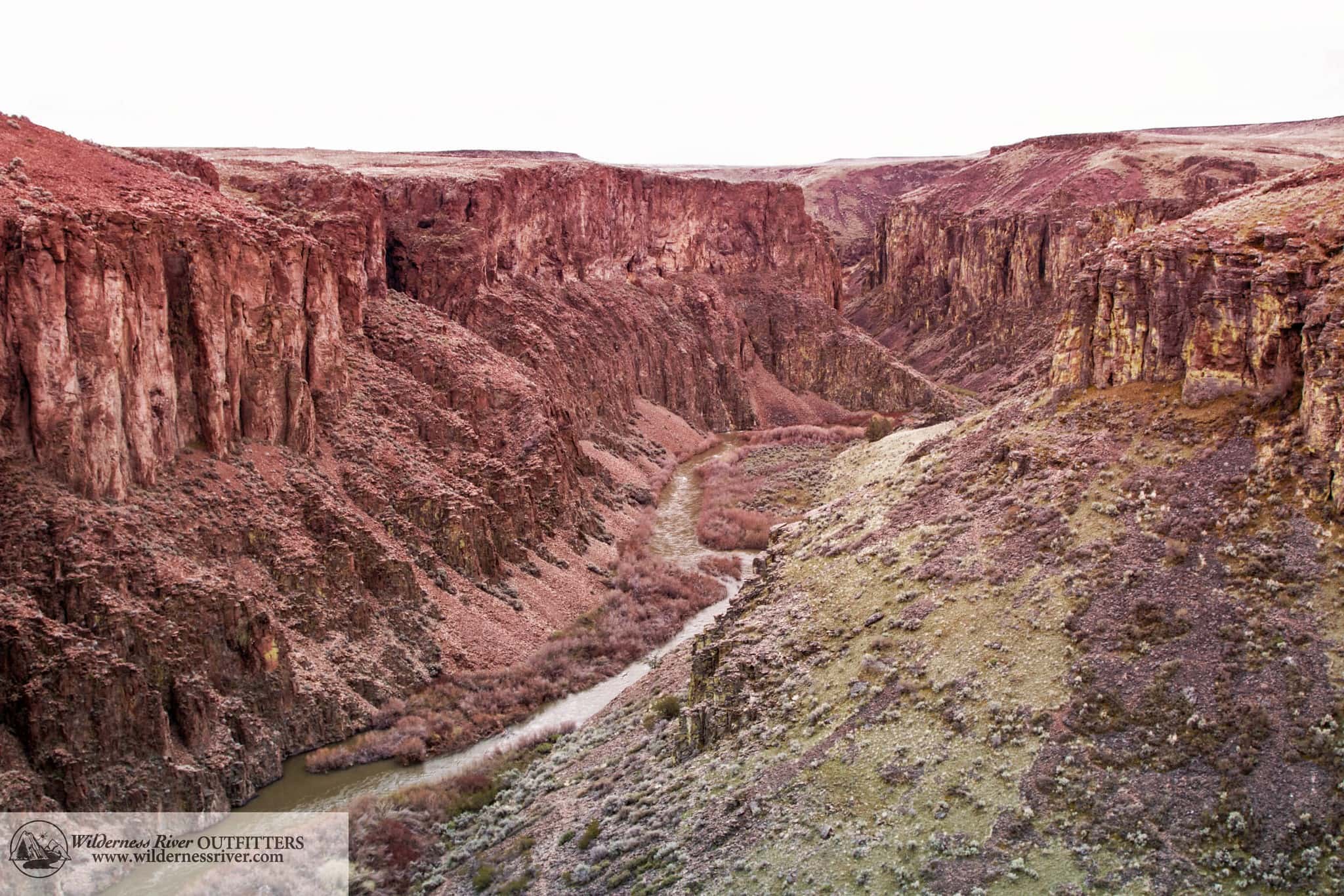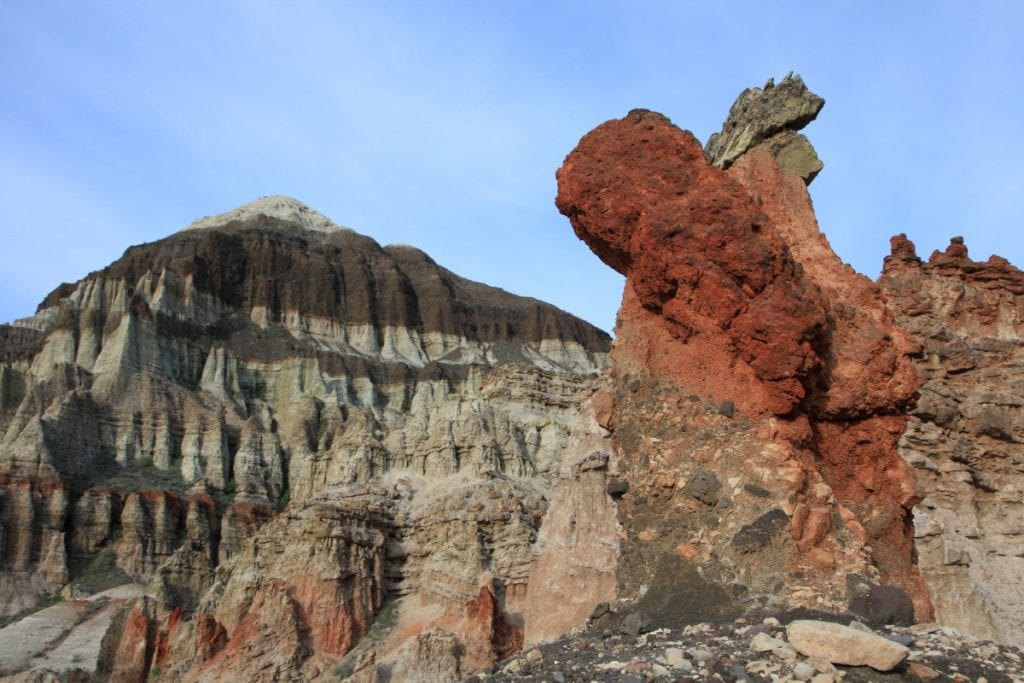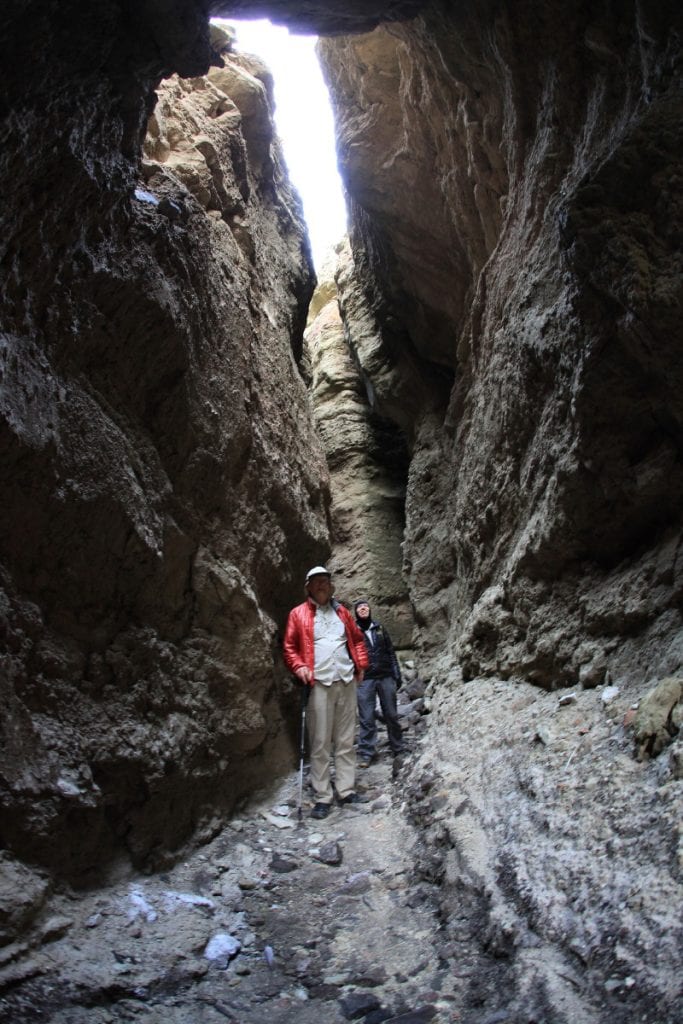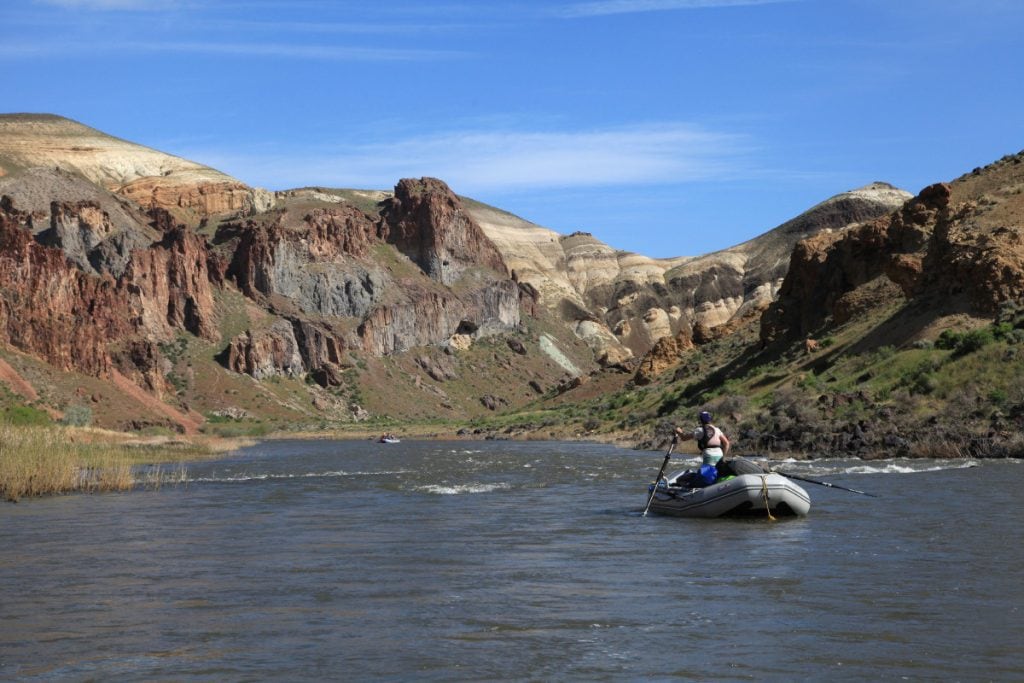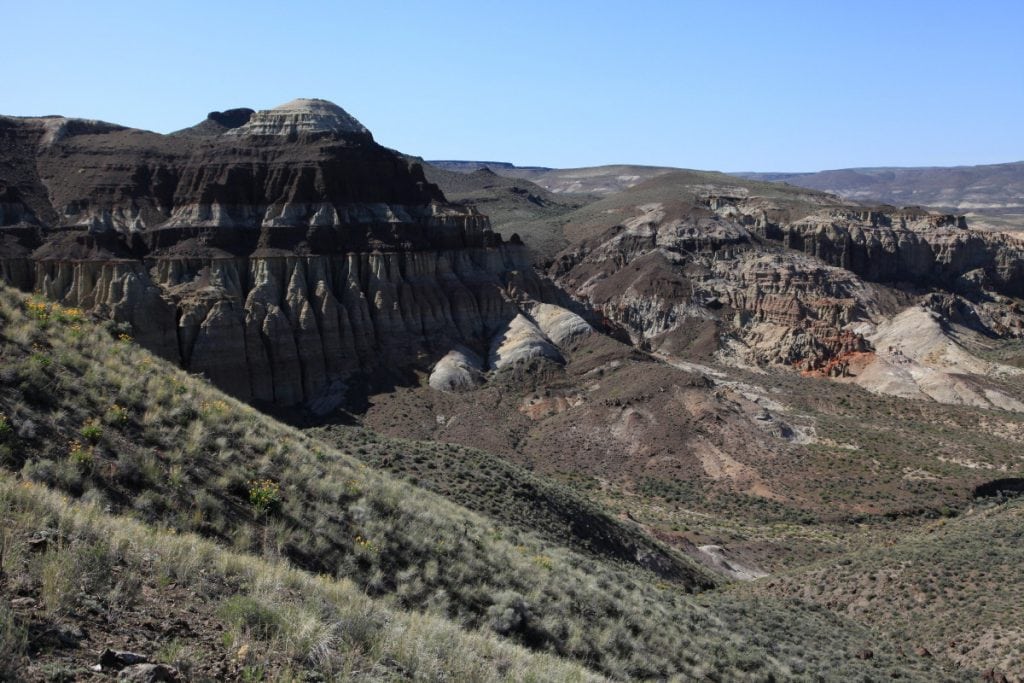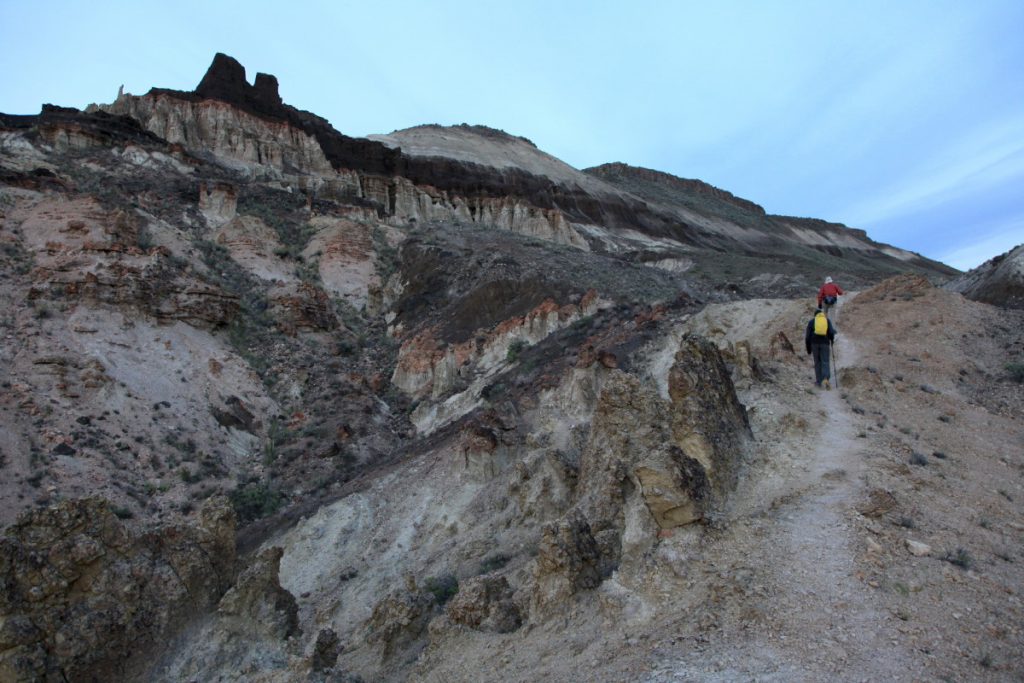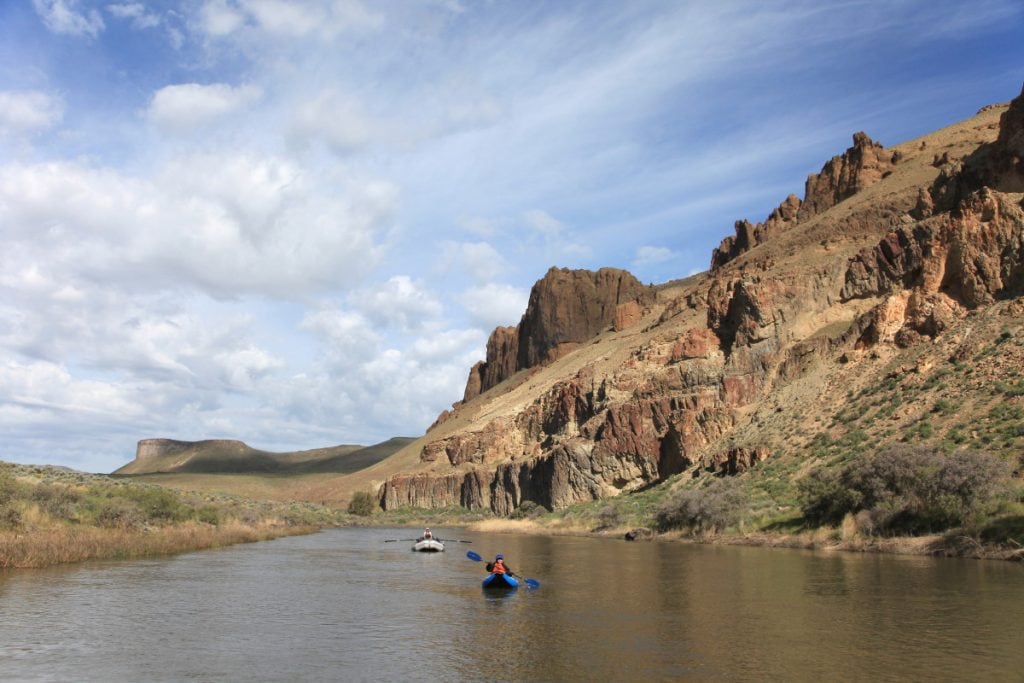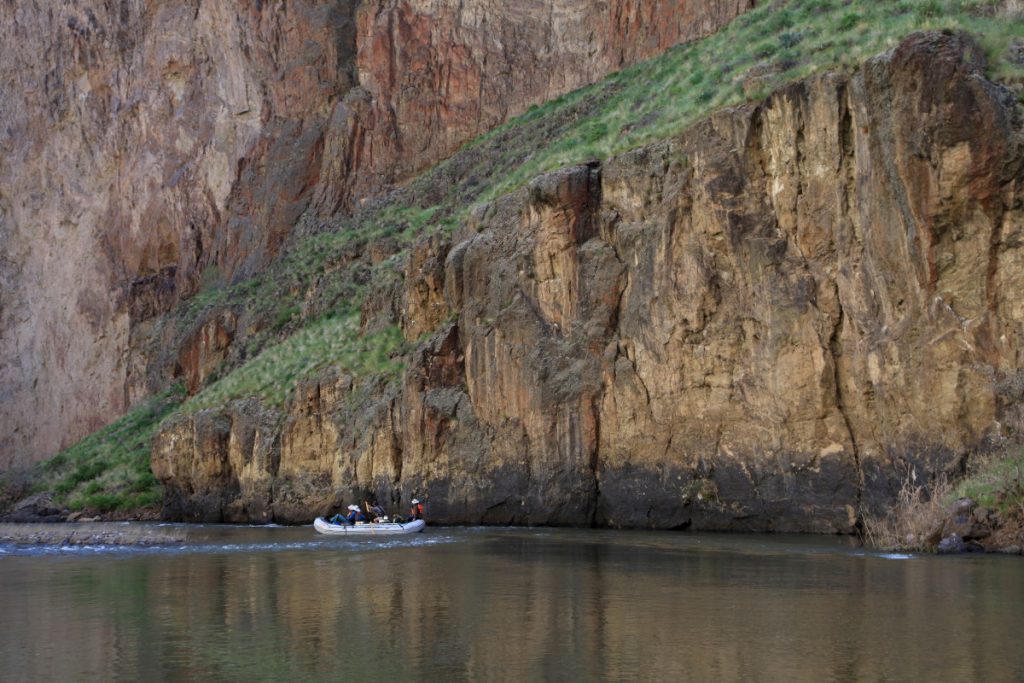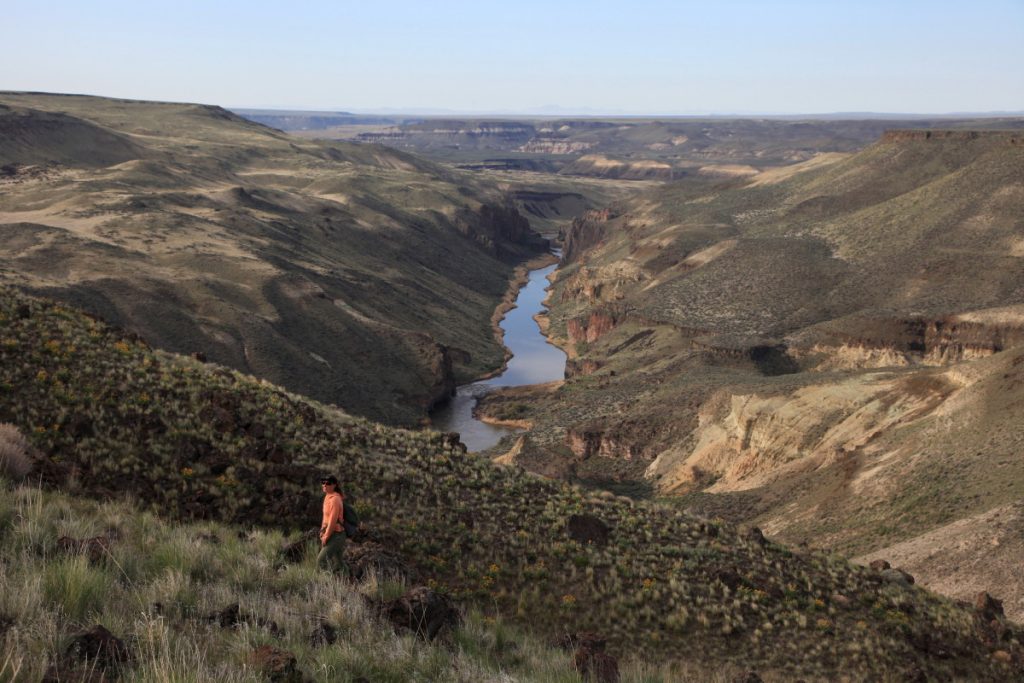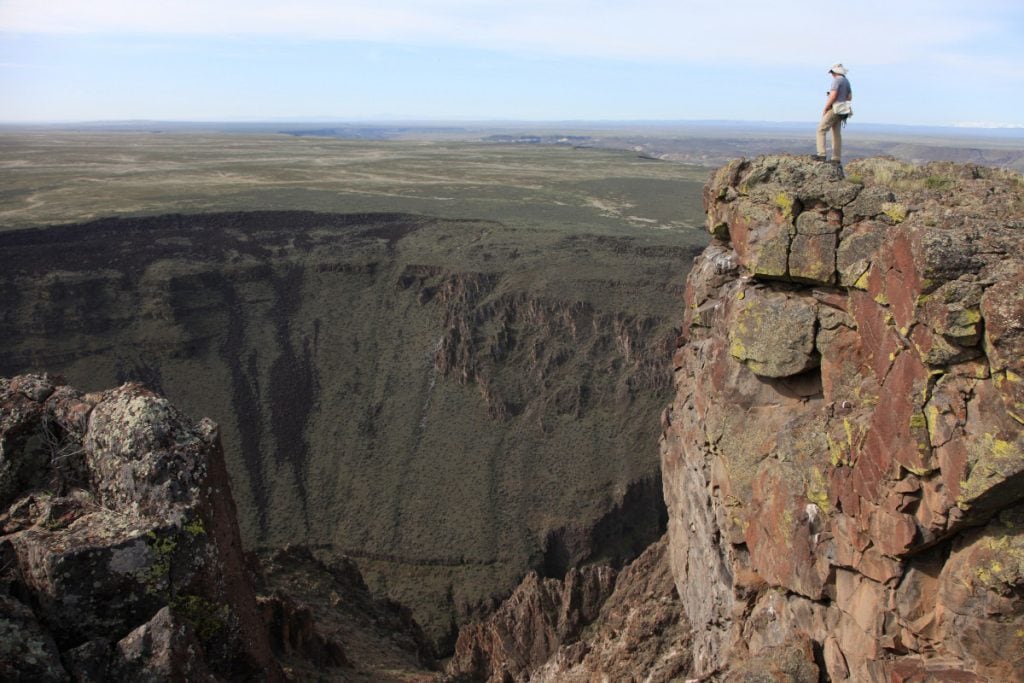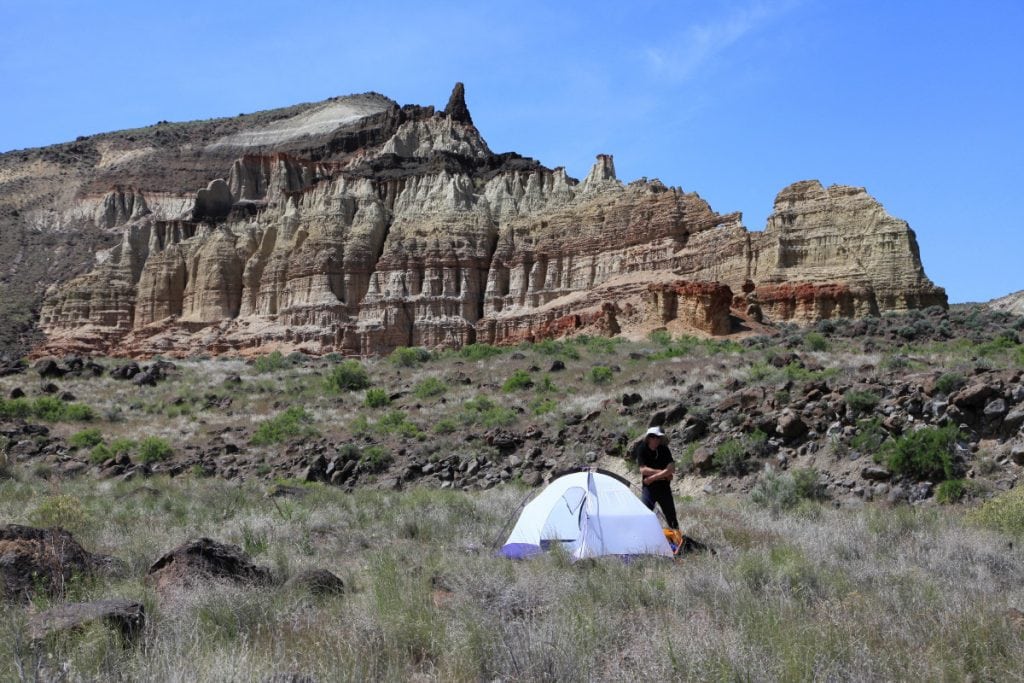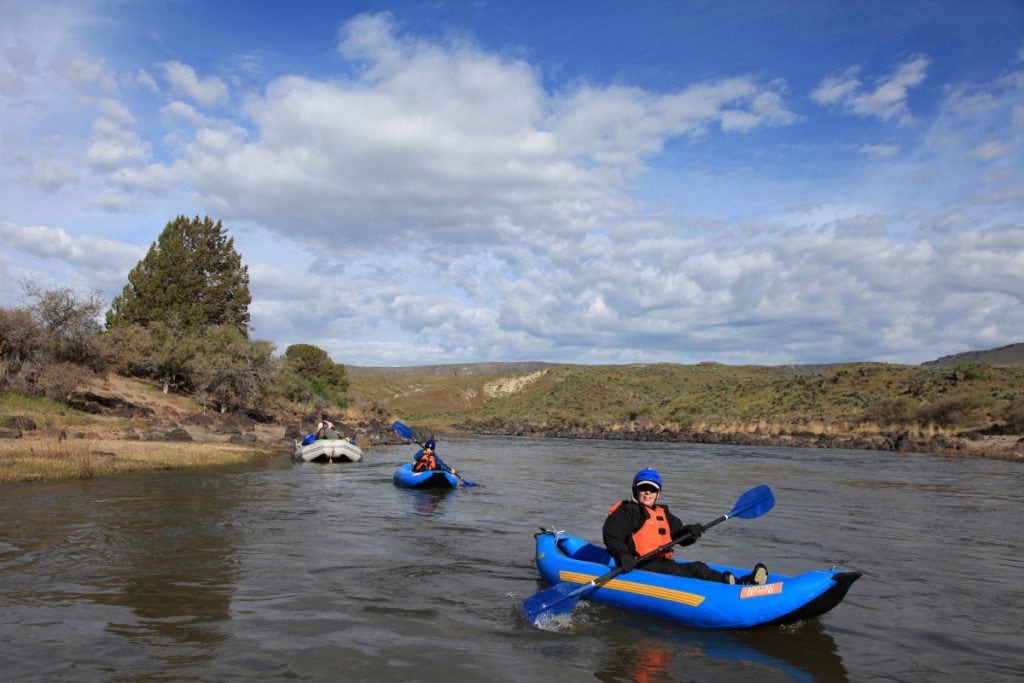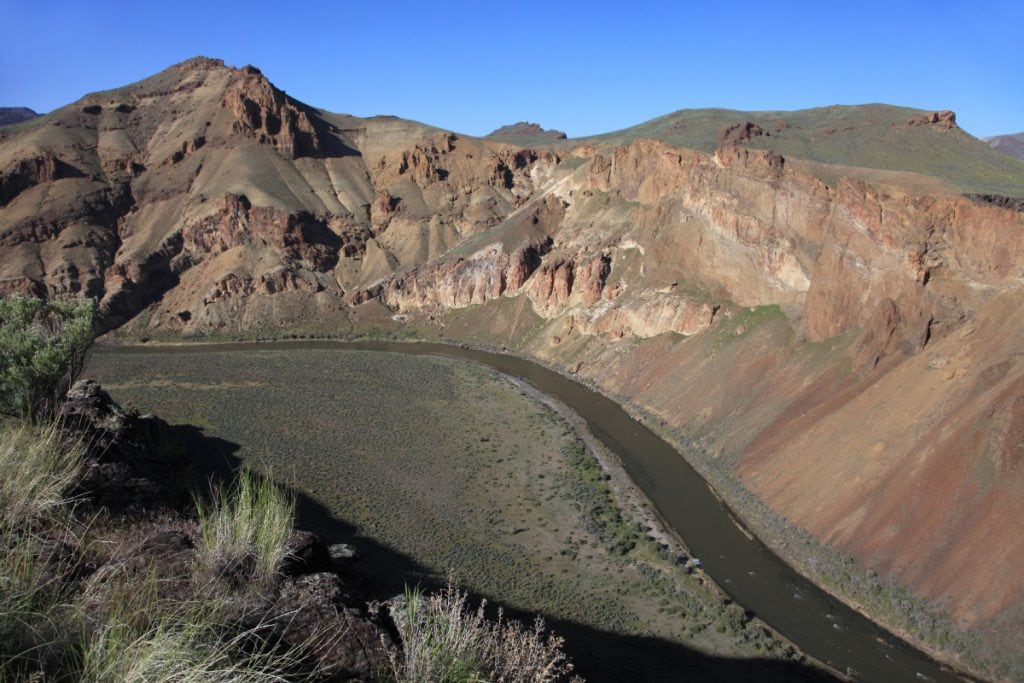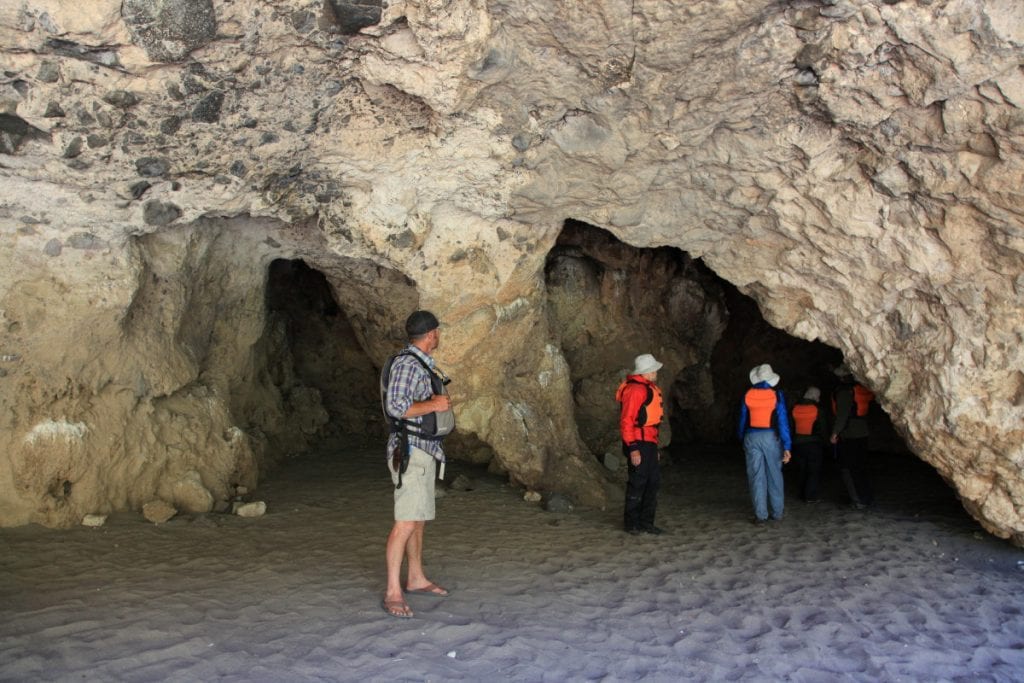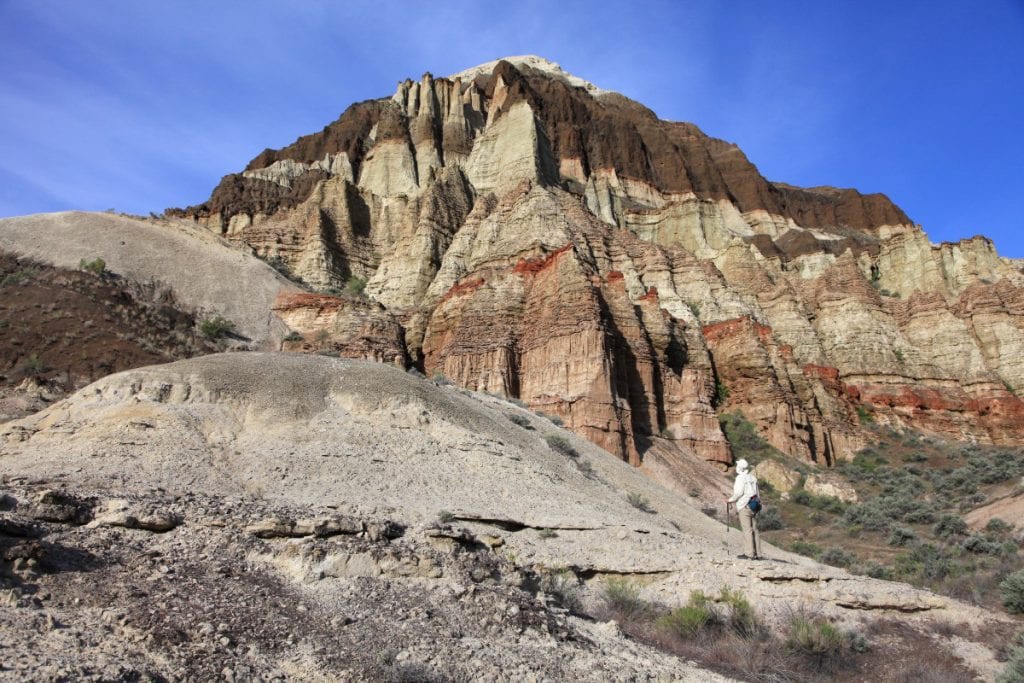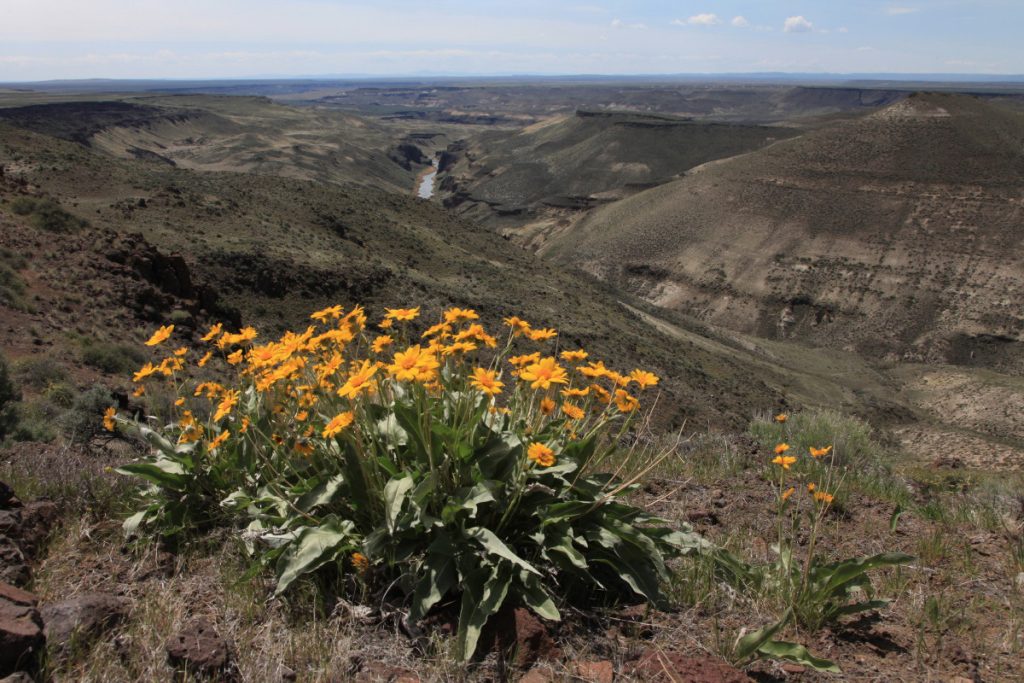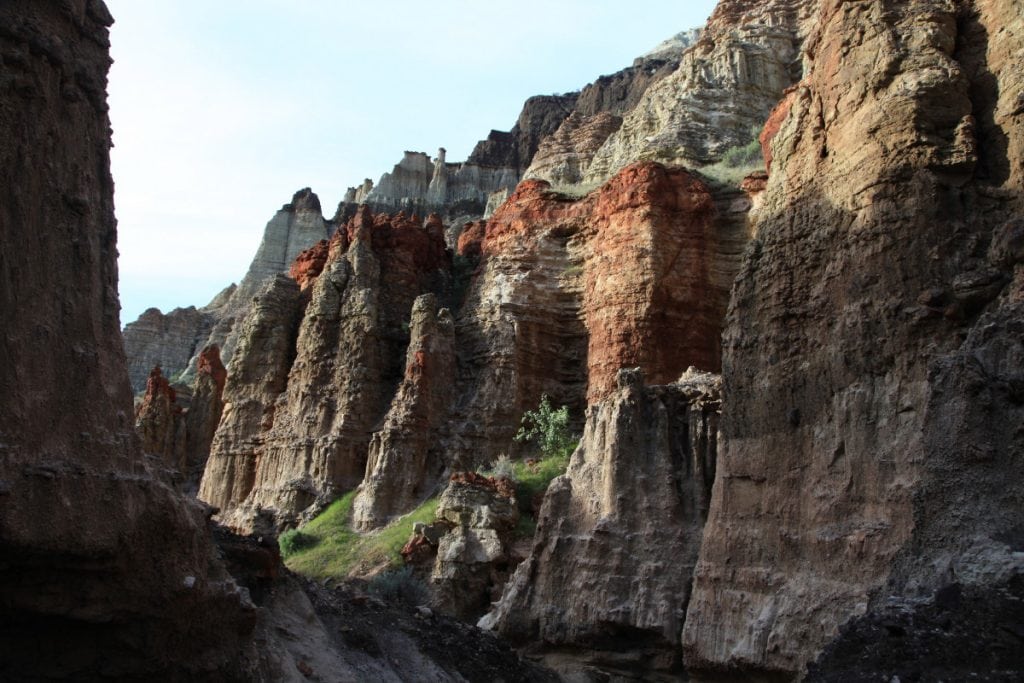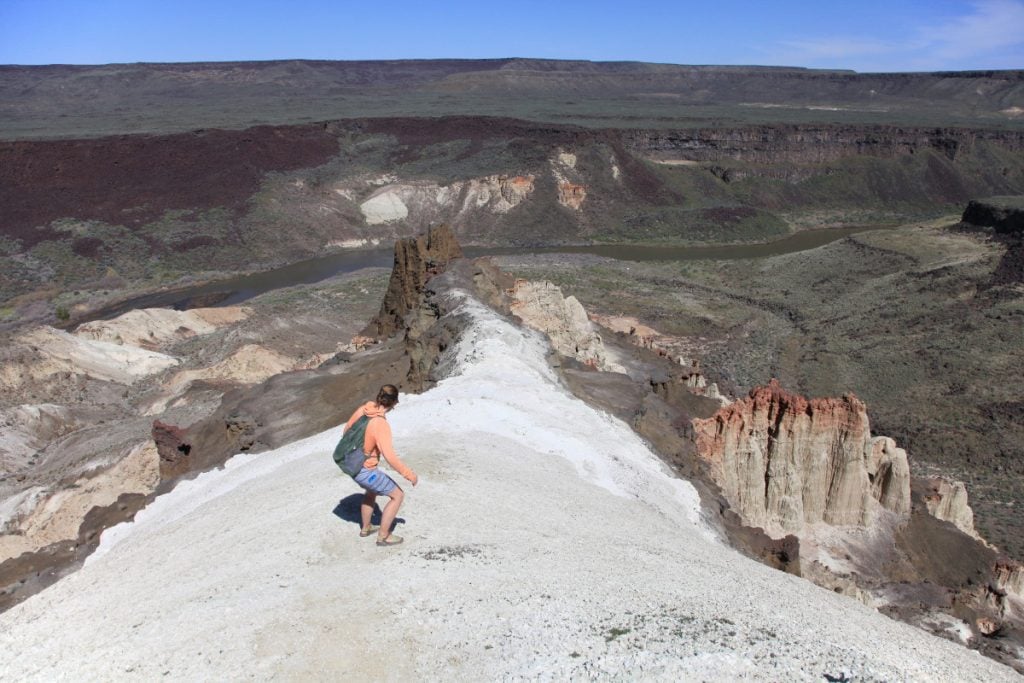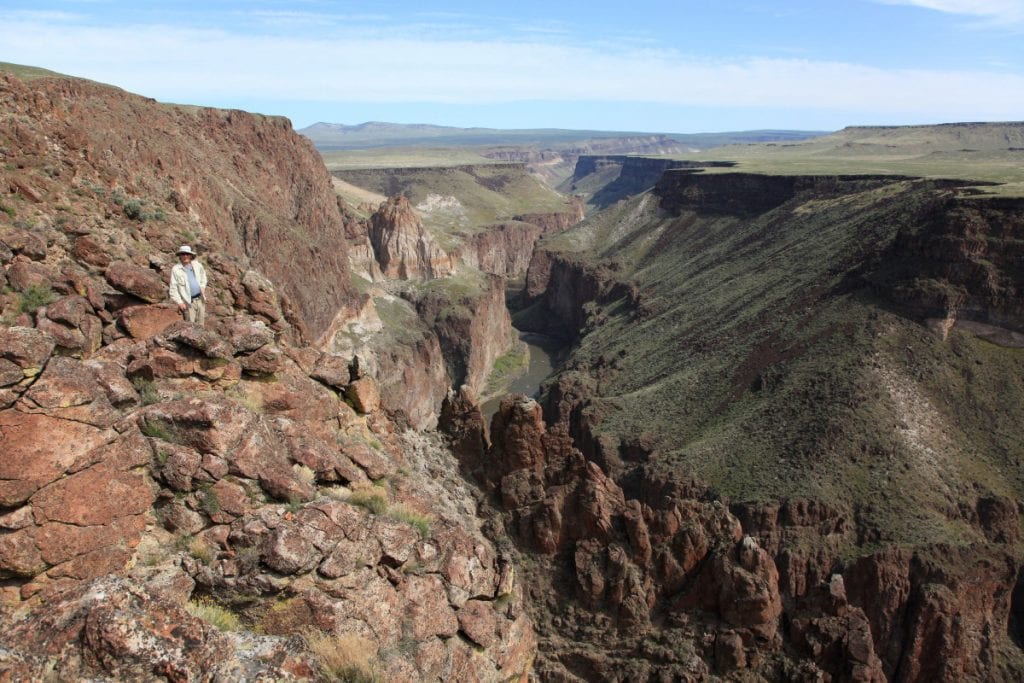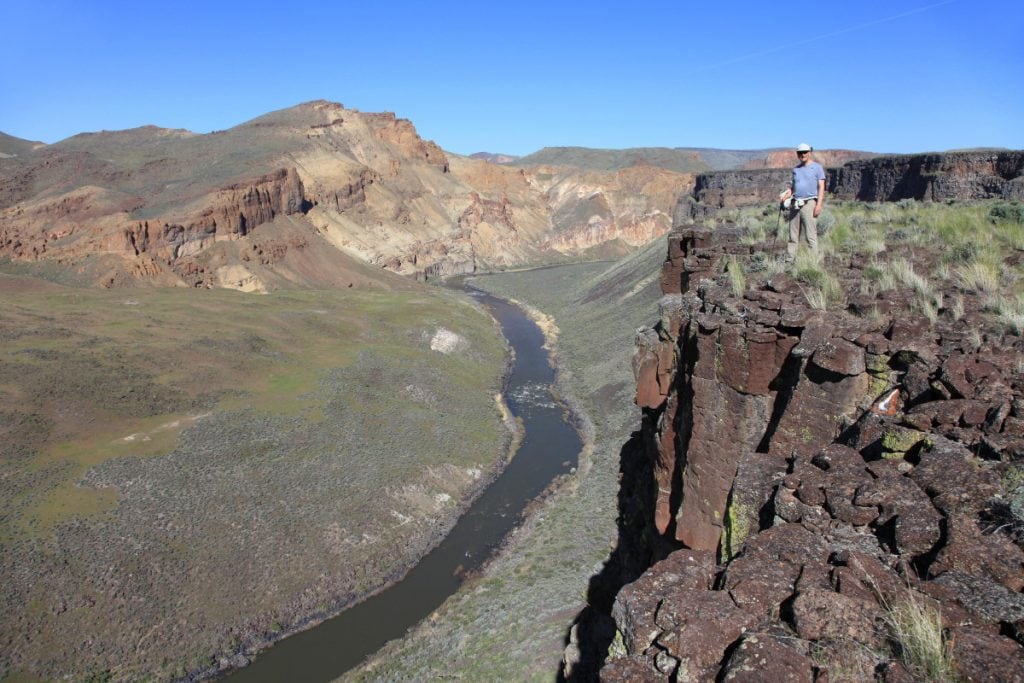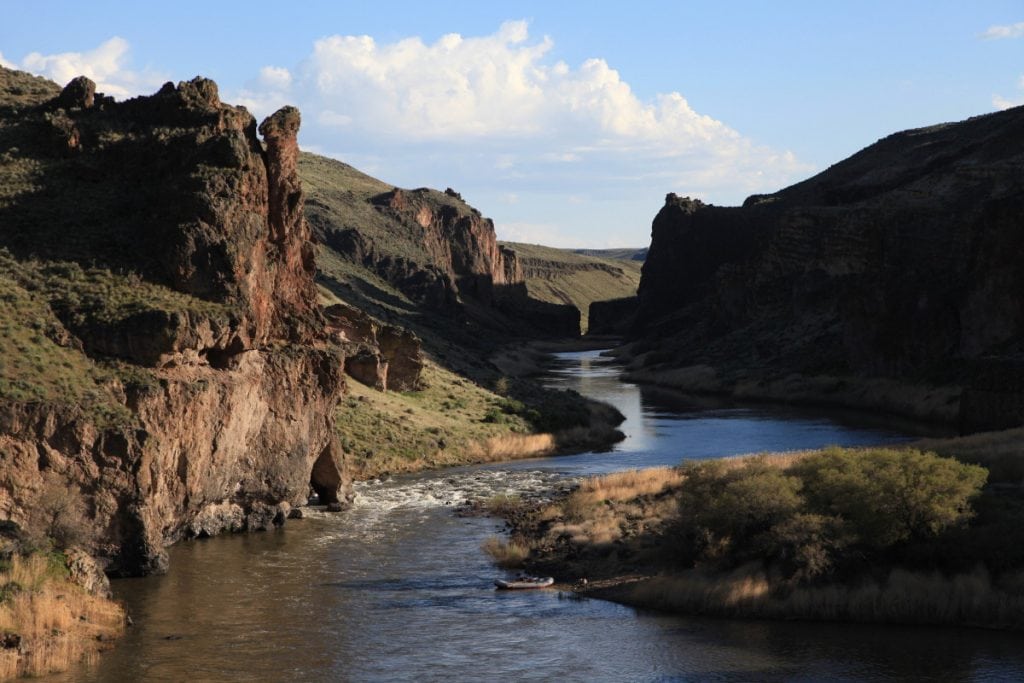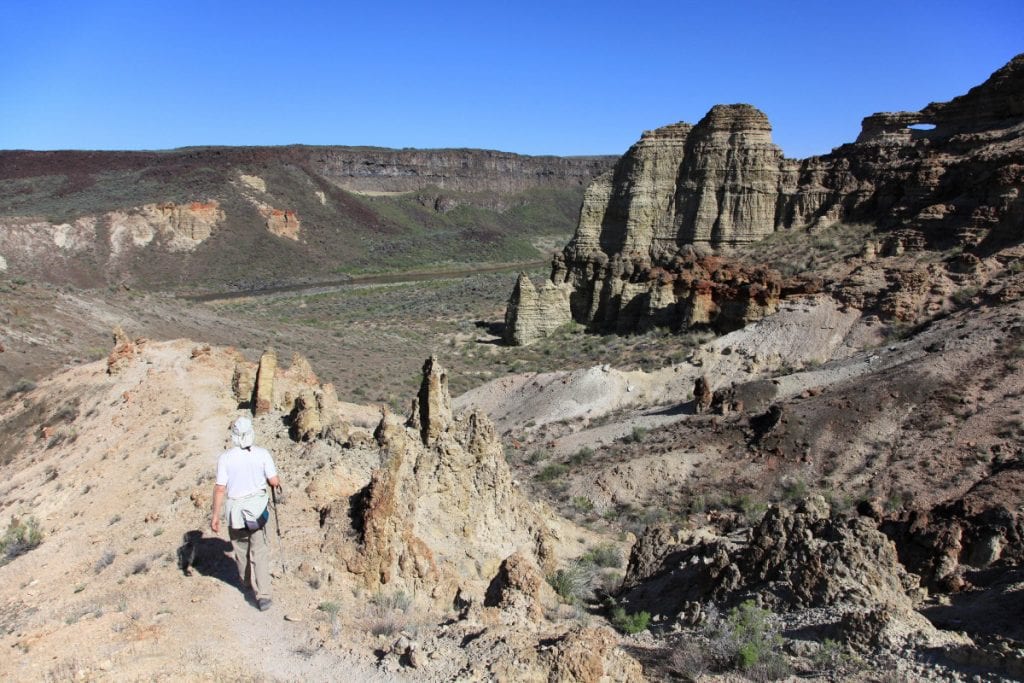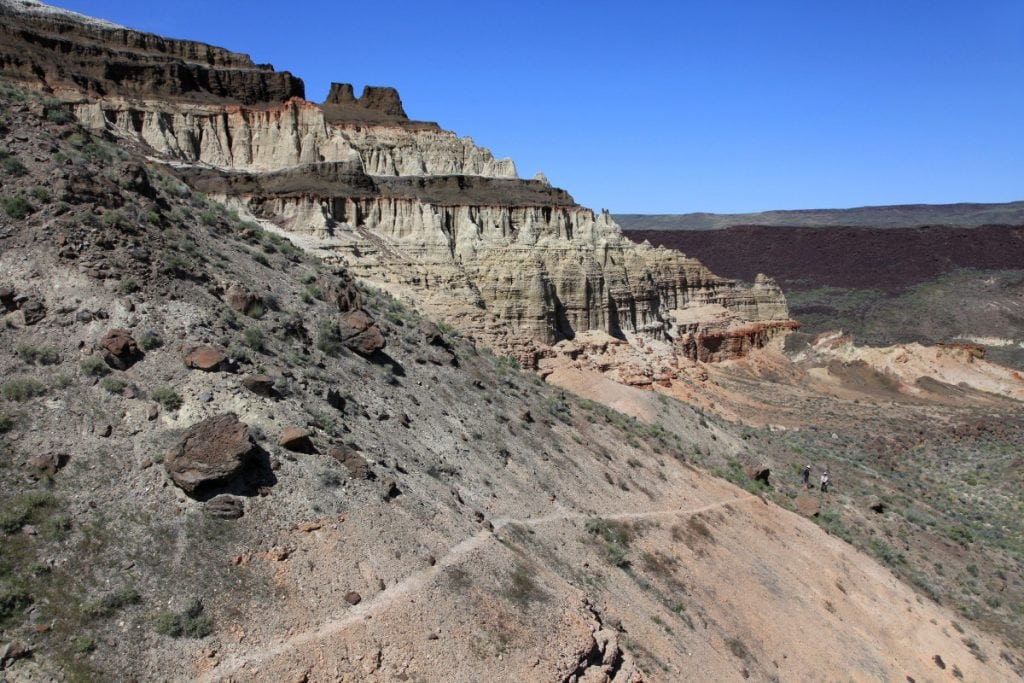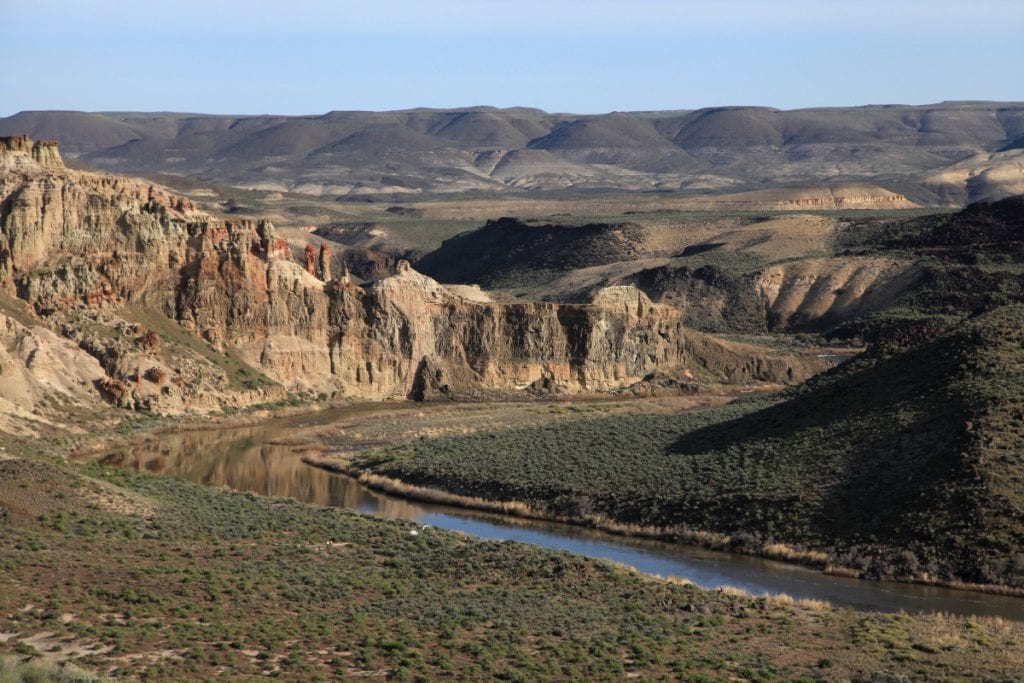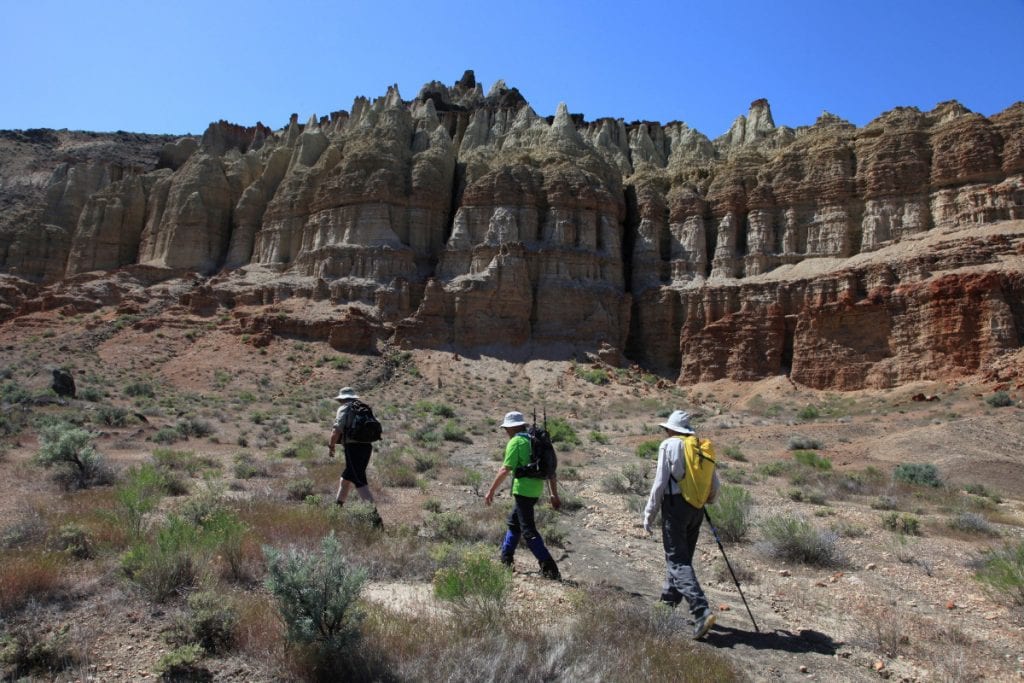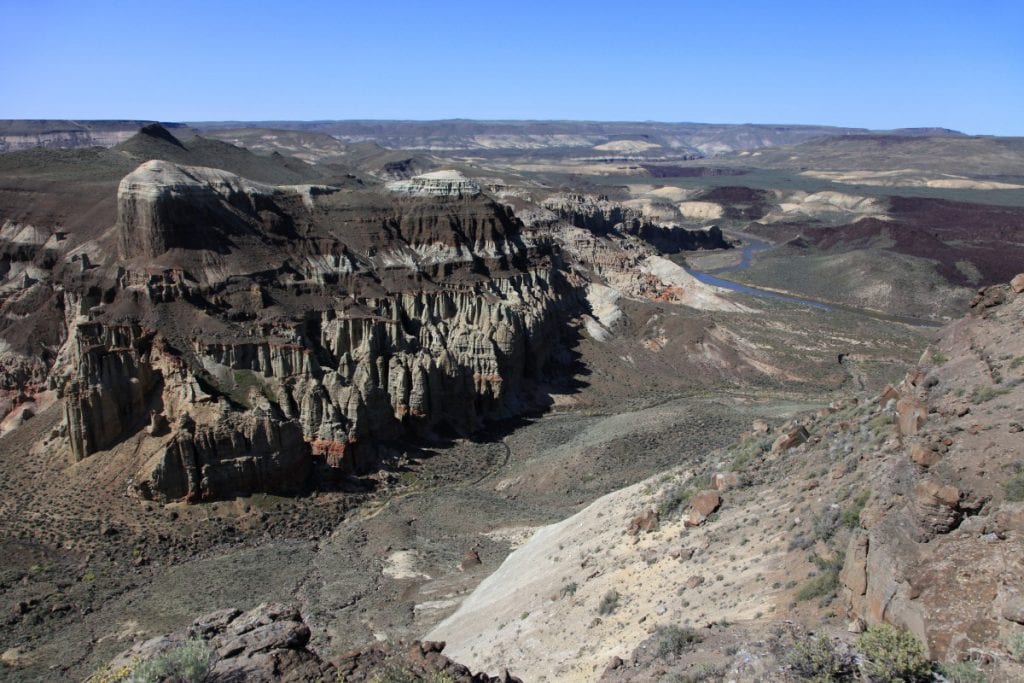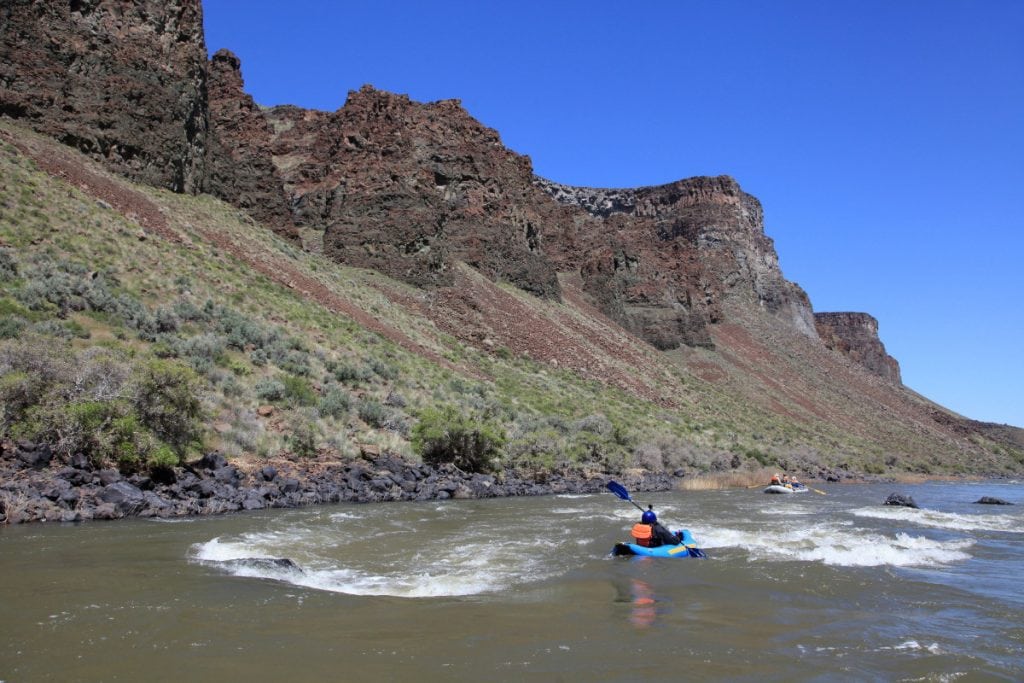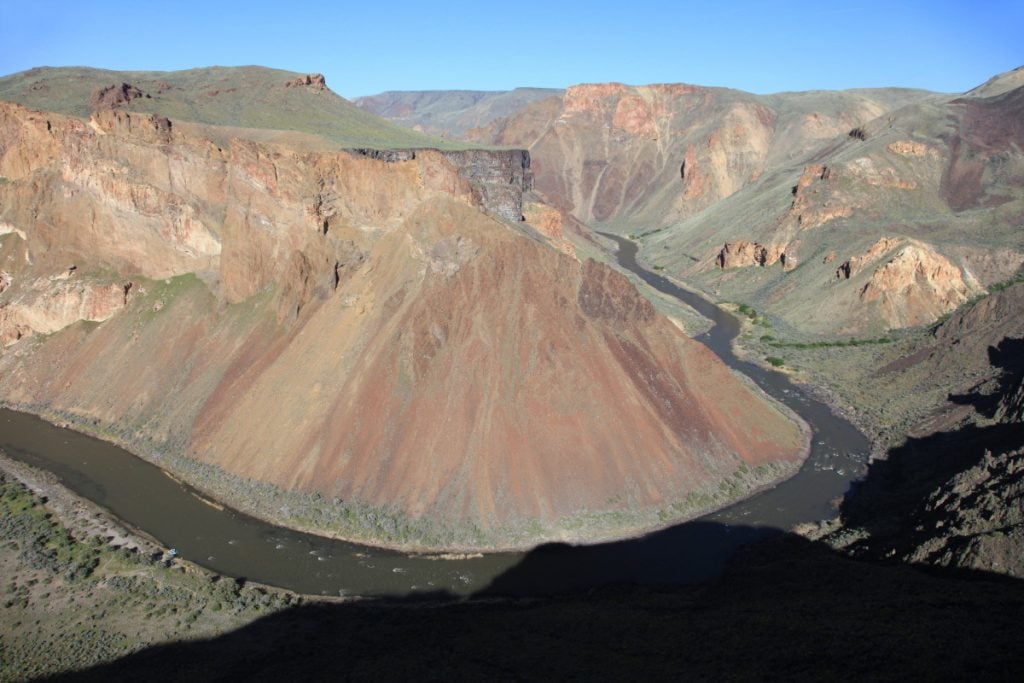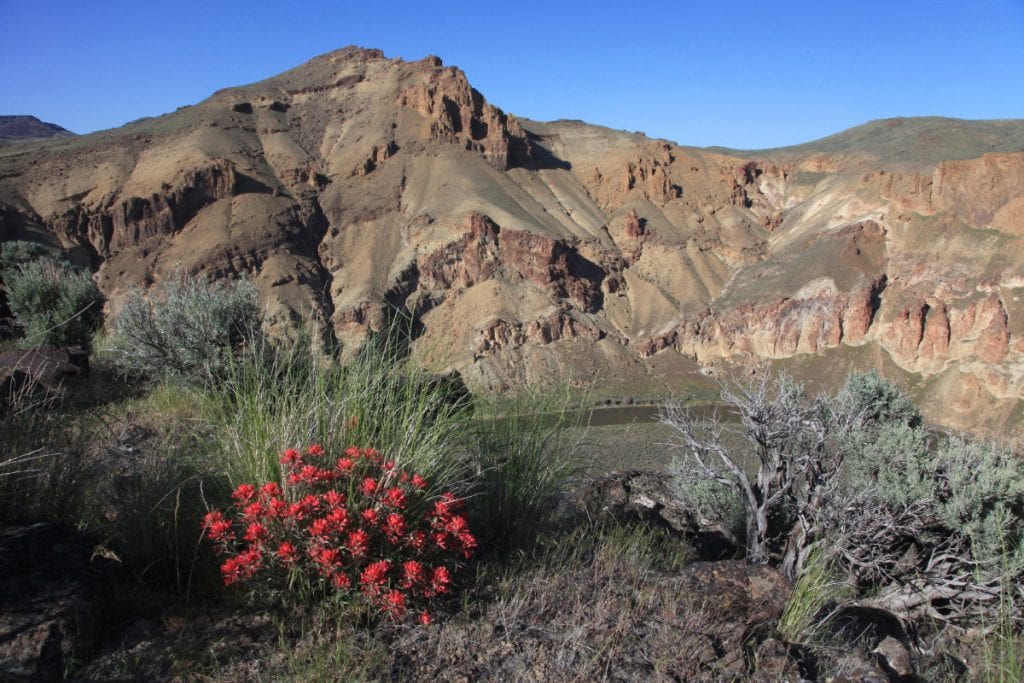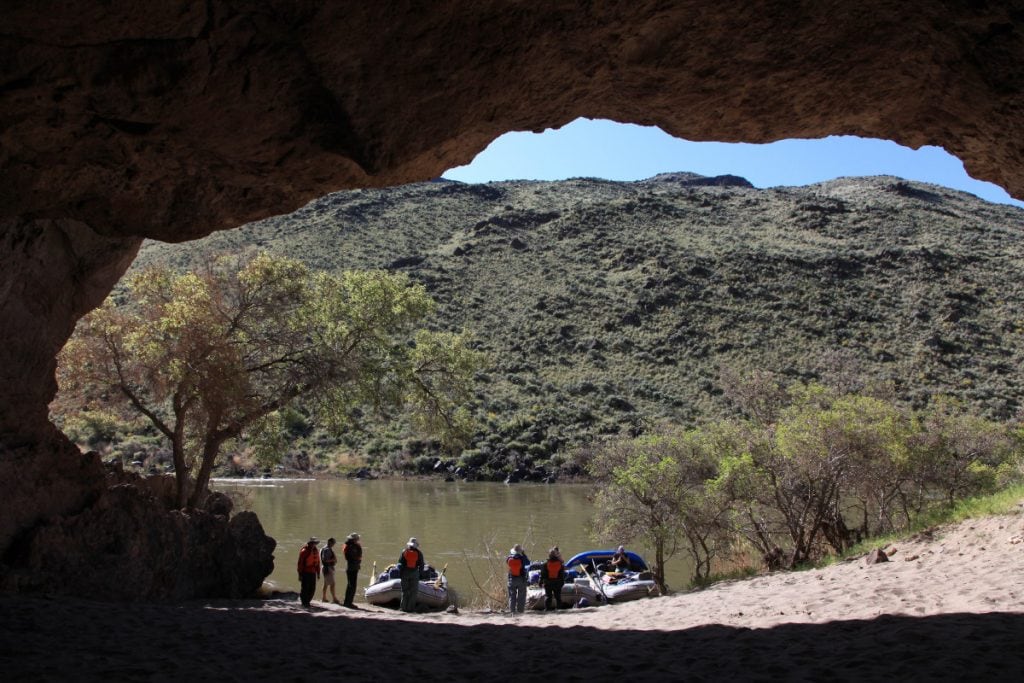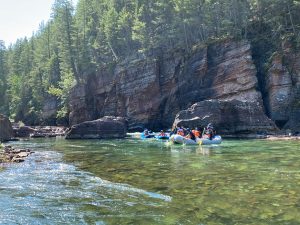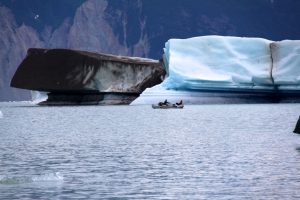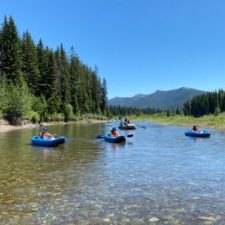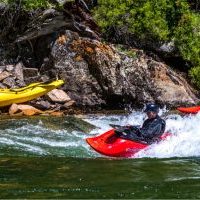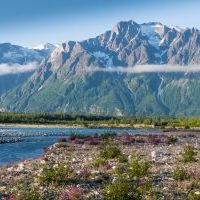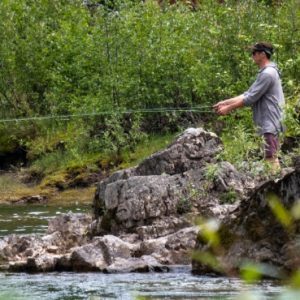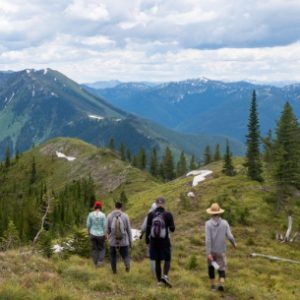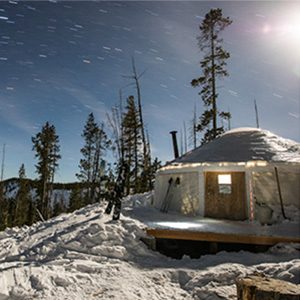Overview
The Lower Owyhee begins at Rome, OR and ends at Birch Creek takeout.
Trip Highlights
- 5-6 days, 68 miles
- Friendly, class II-III whitewater for all experience levels
- Great introduction to the Canyonlands
- Easy access and simple logistics compared to other Owyhee trips
- Beautiful, open high desert landscape
- Rich geologic and human history
There are more than 250 miles of navigable river in the Owyhee Canyonlands! Each section offers abundant hiking opportunities, wildlife, whitewater, pioneer and Indigenous history, and an extraordinary glimpse into geologic time. Spring on the Owyhee during the snowmelt runoff is truly glorious: the wildflowers are blooming, the red-wing blackbirds are singing, and the rapids get exciting. A hike to the canyon rim to spot an antelope in the distance, an eagle chasing its prey, or just to admire the “awesome vastness” of this country is often a trip highlight. We can also venture to historic trapping and homestead cabins along the way and marvel at the determination of those who carved out a living in this rugged country. In 2009, the Owyhee Initiative designated 317 miles of the Owyhee and Jarbidge-Bruneau River systems as wild and scenic. The same legislation designated 517,000 acres of the surrounding land as wilderness, protecting these rivers and the landscape encompassing them.
The Lower Owyhee makes a great introduction to the Canyonlands, as it is much more accessible than the upper canyons. The scenery is more open, with some amazing rock formations and vibrant colors, particularly in the Chalk Basin area. This stretch is full of class II-III whitewater, which makes for a great family trip or vacation for all experience levels. The Lower also has the best hiking options for easy rim access and amazing vistas. Other attractions include excellent camping options, exceptional birding, and Native American petroglyphs. We bring along paddle-boats and inflatable kayaks for those who want a little more action!
We have extensive experience on the Owyhee, and all the different sections and access points to these river canyons create endless possibilities for customizing your trip. Ask us for details and we can help make sure you get the trip you’re looking for!
The Stats
| Departure Month | April, May |
| State / Region | Oregon & Southwest Idaho |
| Adventure Level | Relaxed, Moderate |
| Price Range | Under $1500 |
| Activities | Whitewater Rafting, Inflatable Kayaking, Family Rafting, Hiking, Native American Sites, Rafting, Wildlife |
Logistics
Day before the trip: Arrive in Boise, Idaho no later than 5:30 pm with lodging arranged for this first night. Plan on meeting for orientation at 6 pm the night before the launch at the Best Western Vista Inn. Here you will meet your trip leader, other guests that will be on your trip, and we will hand out dry bags, discuss the trip details and answer any last minute questions.
Day 1: We’ll get an early start for our drive to the river, which typically takes a little more than 2 hours. We will have lunch, gear up and have a river safety talk before starting our float.
Day 2-5: We usually have a dutch oven breakfast around the campfire in the morning. After packing our bags and strapping our loads down we’ll hit the water. Our days on the river vary with many opportunities for hiking, exploring and relaxing around our beautiful camps. We try to customize our activities to the interests of each particular group. The Lower Owyhee has a consistent mix of Class II-III rapids that are a great fit for all experience levels. We’ll usually get to camp in the early evening, have some time for walks, resting, or socializing, followed by a delicious meal cooked over the campfire and in dutch ovens.
Day 6: We’ll eat lunch along the river and have a mellow float to our takeout in mid-afternoon. We will transport the group back to Boise, which should take around 3 or so hours and aim to be back late afternoon/ early evening.
FAQs
Camp Life and Meals
Yes, we do normally change campsites every day. This allows us to cover new scenery, rapids, and side adventures each day at a fun, comfortable pace. On the Middle Fork Flathead we usually take one “layover” day where we stay at the same camp and spend the day fishing, hiking, or relaxing.
On the River
Clothing, Footwear, and Gear
Logistics
Miscellaneous
Book Now
